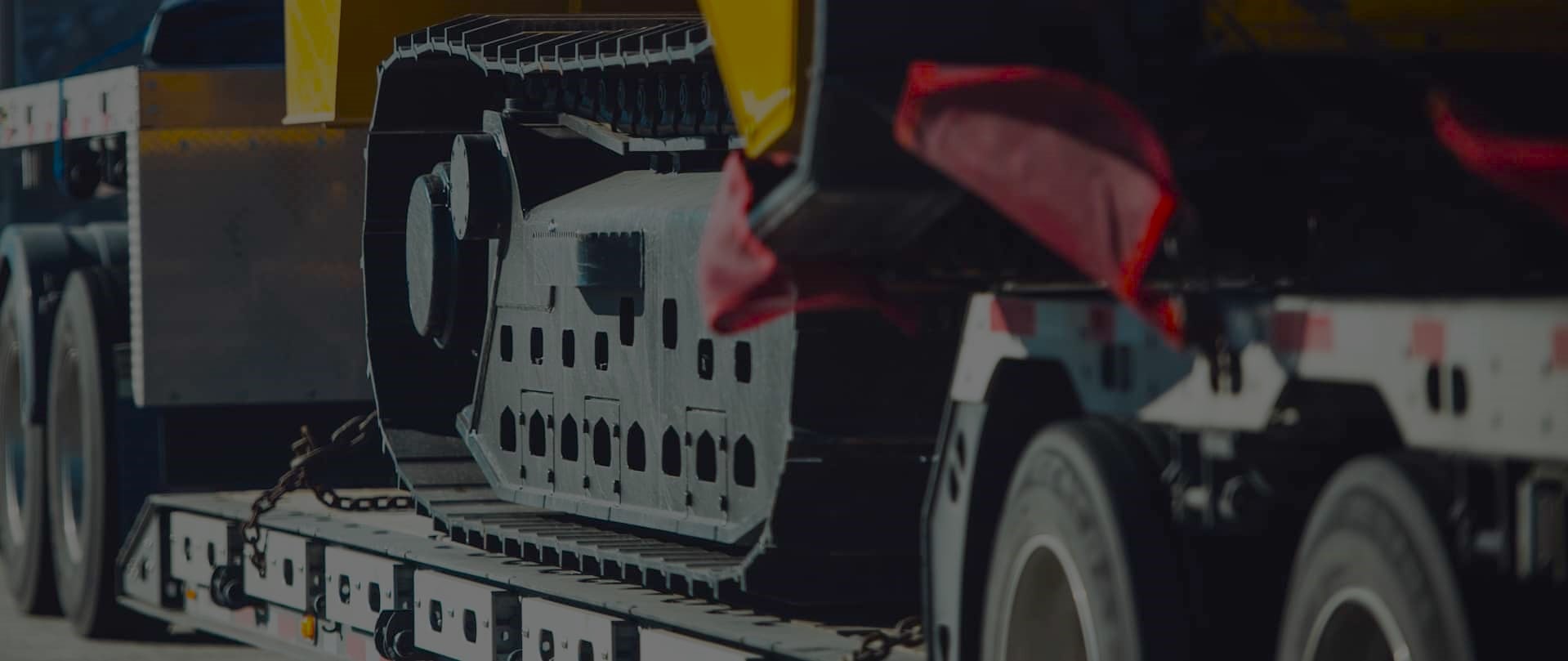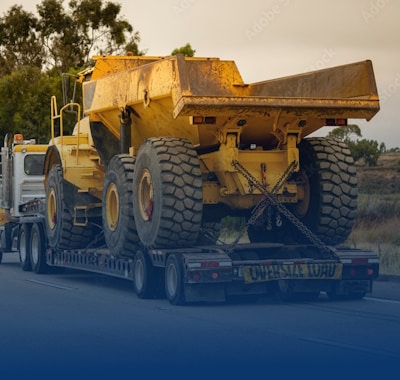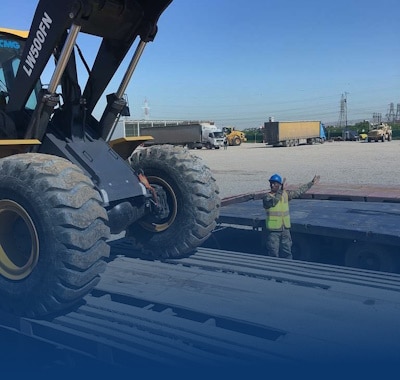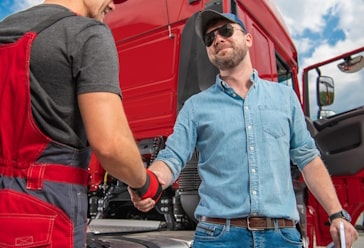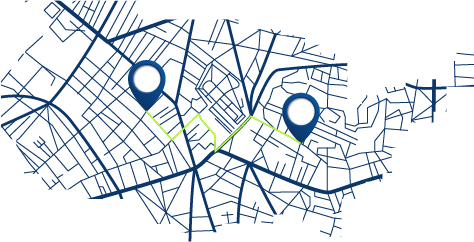Drones for Route Surveys in Heavy Hauling: Key Benefits
Freedom Heavy Haul can offer expedited Pickup and Delivery for any size shipment anywhere in the USA. Contact us today for No Hassle, No Pressure Pricing.
Drone technology has revolutionized heavy civil and earthworks surveys, offering a faster, safer, and more cost-effective alternative to traditional methods. By capturing precise data from above, these devices streamline work processes, reducing time and effort on-site.
One of the standout advantages is enhanced safety. Drones eliminate the need for workers to access hazardous areas, minimizing risks during operation. Frequent data collection ensures accurate monitoring without compromising personnel safety.
We leverage advanced GNSS and post-processing techniques to deliver unmatched survey accuracy. This approach not only improves efficiency but also provides real-time insights, guiding decision-making with confidence.
Our expertise in heavy hauling services ensures reliable, expert solutions tailored to your needs. Trust us to deliver cutting-edge technology that prioritizes safety and precision.
Introduction to Drone Surveys in Heavy Hauling
Modern UAVs are transforming how we approach heavy hauling operations, offering unmatched precision and efficiency. These devices capture high-definition imagery and geo-referenced data, essential for modern route surveys. By automating the process, we achieve faster results while minimizing manual effort.
Drone technology excels in speed and accuracy. Traditional methods often require significant time and resources, but UAVs streamline data collection. This allows for real-time updates, improving decision-making on-site. Automated surveys also reduce human error, ensuring higher quality results.
Effective planning is crucial for successful drone flights. By optimizing flight paths, we minimize risk and enhance safety. This approach ensures that data is collected efficiently, even in challenging environments. Detailed planning also reduces operational downtime, saving both time and money.
The data collected by drones is comprehensive and precise. High-resolution images and accurate measurements provide a clear picture of the site. This level of detail supports better project management, leading to cost-effective solutions. Drone technology is reshaping heavy hauling, offering safer and more reliable outcomes.
| Aspect | Traditional Methods | Drone Surveys |
|---|---|---|
| Speed | Time-consuming | Rapid data collection |
| Precision | Prone to human error | High accuracy |
| Safety | Exposes workers to hazards | Minimizes on-site risks |
| Cost | Higher operational expenses | Reduces overall costs |
The Benefits of Using Drones for Route Surveys in Heavy Hauling
Advanced UAV systems are reshaping how industries approach complex site assessments, delivering unparalleled precision. By replacing traditional GPS rovers, drones capture survey-grade accuracy even in challenging conditions. This ensures detailed mapping and reliable datum for project planning.
An effective survey plan is key to success. Modern drones streamline this process, creating superior data sets for inspection and modeling. This approach minimizes errors and enhances project outcomes. Detailed planning also reduces operational downtime, saving time and resources.
Efficiency is another standout advantage. Drones quickly capture complex site data that traditionally required significant manpower. For example, in construction and mining, UAVs provide real-time updates, improving decision-making. This leads to better project execution and fewer costly reworks.
Real-world applications highlight the transformative impact of drone technology. Industries like civil construction and mining benefit from increased efficiency and safety. By leveraging advanced UAV systems, companies achieve better inventory tracking and enhanced safety standards.
| Aspect | Traditional Methods | Drone Surveys |
|---|---|---|
| Data Collection | Manual, time-intensive | Automated, rapid |
| Accuracy | Prone to errors | Survey-grade precision |
| Planning | Complex, resource-heavy | Streamlined, efficient |
| Safety | Exposes workers to risks | Minimizes on-site hazards |
Enhancing Safety and Reducing Risks with Drone Surveys
Safety remains a top priority in heavy hauling, and drones are transforming how we approach it. By eliminating the need for personnel to access dangerous areas, we significantly reduce accidents and hazards. This technology ensures safer route surveys, even in challenging terrains or around heavy machinery.
Reducing On-Site Hazards
Drones excel in minimizing risks on site. They capture precise data without exposing workers to potential dangers. For example, in areas with unstable ground or active equipment, drones provide accurate surveys while keeping personnel safe. This approach not only protects workers but also enhances project efficiency.
Worker Safety Best Practices
To ensure optimal safety, we follow strict protocols. Pre-flight checks and detailed operational plans are essential. These steps guarantee that drones operate smoothly and maintain continuous safety standards. By adopting these methods, we prioritize worker protection while delivering reliable results.
Modern surveying drones are equipped with advanced features like obstacle avoidance and real-time monitoring. These capabilities ensure safe operations in complex environments. For instance, hydraulic trailers complement this technology by enhancing stability and load capacity, further reducing risks during haul operations.
By integrating drones into our workflows, we achieve a safer, more efficient approach to heavy hauling. This technology not only protects workers but also ensures precise data collection, leading to better project outcomes.
Cost Savings and Efficiency Gains in Heavy Hauling Projects
Efficiency and cost-effectiveness are critical in heavy hauling, and drones are proving to be game-changers. By automating data collection, these devices significantly reduce operational expenses while enhancing project timelines.
Lowering Operational Costs
Streamlined data collection is a major advantage. Drones eliminate the need for extensive manual labor, saving both time and resources. This approach minimizes human error, ensuring high-quality results without costly reworks.
Advanced equipment plays a key role. Survey-grade imagery captured by drones reduces the reliance on manpower, cutting down on labor costs. This technology also speeds up the process, allowing for quicker project completion.
Real-world cases demonstrate significant savings. Frequent drone surveys have led to better budgeting and reduced unexpected expenses. For example, detailed digital maps created by drones aid in efficient planning, minimizing the risk of costly errors.
Faster data acquisition translates into quicker decision-making. This efficiency improves overall project management, ensuring timely and cost-effective outcomes. By leveraging 3D mapping technology, we further enhance precision and planning accuracy.
Optimizing Logistics and Project Management with Real-Time Data
Real-time data from drone flights is reshaping how we manage logistics and oversee projects. By integrating live geospatial information into software platforms, we enhance collaboration and streamline workflows. This approach ensures that all stakeholders have access to up-to-date insights, improving overall project oversight.
Real-Time Data Integration
Drone surveys provide immediate access to critical information. Flight data is transmitted and processed rapidly, enabling continuous monitoring of progress. This seamless integration allows teams to identify and address issues proactively, reducing delays and improving efficiency.
Improving Decision-Making Processes
Accurate, up-to-date data supports better decision-making. With real-time updates, project managers can make informed choices quickly, ensuring smoother operations. This level of monitoring is particularly valuable in large-scale heavy hauling projects, where delays can be costly.
We are committed to leveraging drone flight technology to optimize logistics and deliver safe, efficient results. By providing real-time data, we empower teams to manage projects more effectively, ensuring success from start to finish.
The Role of GNSS, RTK, and PPK in Drone Survey Accuracy
Precision in drone surveys relies heavily on advanced GNSS, RTK, and PPK technologies. These systems ensure survey-grade accuracy, even in challenging environments. By leveraging these tools, we deliver consistent, high-quality results for construction and heavy hauling projects.
Understanding RTK vs. PPK
RTK (Real-Time Kinematic) and PPK (Post-Processed Kinematic) are both used for precise positioning. RTK provides real-time corrections during flight, while PPK processes data after the flight. PPK is increasingly preferred because it doesn’t rely on constant connectivity, making it more reliable in remote areas.
Our team uses PPK to ensure accuracy even in areas with limited signal access. This approach minimizes positional errors and enhances overall project management.
Leveraging GNSS for Precision
GNSS (Global Navigation Satellite Systems) plays a critical role in drone surveys. It provides precise geotagging for every image captured during flights. This ensures that data is accurate and reliable, supporting better decision-making on-site.
By integrating GNSS with PPK, we achieve unmatched precision. This combination reduces errors and streamlines survey operations, saving time and resources. Our expertise in these technologies ensures that every project meets the highest standards of accuracy.
Advanced GNSS systems empower our team to deliver consistent results across construction and heavy hauling projects. This precision enhances safety, efficiency, and overall project success.
Harnessing Photogrammetry for Detailed 3D Mapping
Photogrammetry is transforming how we capture and analyze site data, offering unparalleled detail and accuracy. This technology converts aerial images into precise 3D models, providing critical insights for heavy hauling projects. By leveraging advanced techniques, we ensure every surface is accurately represented.
From Images to 3D Models
Photogrammetry works by stitching together overlapping images captured during drone flights. These images are processed to create detailed 3D maps and orthomosaics. This method ensures accurate representations of site topography, supporting better planning and decision-making.
One drone flight can capture thousands of images, significantly reducing cost and time. Traditional methods often require extensive manual effort, but photogrammetry automates the process. This efficiency translates into faster project timelines and lower operational expenses.
Detailed 3D models provide critical insights for design, planning, and verification. These models are essential for identifying potential challenges and ensuring project accuracy. By integrating photogrammetry into our workflows, we deliver precise, actionable data for every project.
| Aspect | Traditional Methods | Photogrammetry |
|---|---|---|
| Data Collection | Manual, time-intensive | Automated, rapid |
| Accuracy | Prone to errors | High precision |
| Cost | Higher expenses | Reduced costs |
| Surface Detail | Limited resolution | High-resolution models |
Photogrammetry is integral for precision in various applications, from road design to construction monitoring. By using this high-quality mapping tool, we ensure every project meets the highest standards of accuracy and efficiency.
Implementing Ground Control for Enhanced Survey Precision
The integration of advanced ground control methods enhances the reliability of drone survey results. Ground control points (GCPs) are critical for ensuring survey-grade accuracy, especially in complex environments. By strategically placing these points, we achieve precise georeferencing, which is essential for heavy hauling projects.
Smart Ground Control Points
Traditional GCPs have evolved with the introduction of smart systems like AeroPoints. These devices simplify field setup and boost data accuracy. Smart GCPs automatically capture and process data, reducing the need for manual intervention. This feature not only saves time but also minimizes human error, ensuring more reliable results.
Field Setup Essentials
Effective placement and distribution of GCPs are crucial for optimal results. We ensure these points are evenly spaced across the survey area to provide comprehensive coverage. Proper setup also includes verifying signal strength and environmental conditions, which can impact data quality. By following these steps, we enhance the accuracy of every flight.
Dedicated software platforms play a key role in integrating ground control data with aerial survey information. These tools streamline the process, allowing for seamless data processing and analysis. This integration ensures that all stakeholders have access to accurate, up-to-date information, improving decision-making and project outcomes.
Accurate ground control is critical for delivering reliable survey results. By leveraging advanced methods and tools, we enhance precision and efficiency in the industry. For example, in the heavy haul trucking industry in Tennessee, these techniques have proven invaluable for improving safety and operational efficiency.
Applications in Civil Construction, Mining, and Aggregates
Surveying drones are revolutionizing how industries handle complex terrain and inaccessible areas. In civil construction, mining, and aggregates, these devices provide precise data, improving efficiency and safety. By capturing high-resolution imagery and 3D models, drones streamline operations and enhance decision-making.
In civil construction, drones are using drone technology to monitor progress and track materials. This ensures accurate measurements and reduces delays. For example, in large-scale projects, drones provide real-time updates, enabling better resource allocation and planning.
Mining operations benefit significantly from drone surveys. Drones navigate challenging terrain, capturing data from hazardous or hard-to-reach areas. This minimizes risks to workers while ensuring accurate inventory tracking. Up-to-date aerial maps also aid in identifying potential issues early, reducing costly reworks.
In the aggregates industry, drones are transforming how companies manage extraction and processing. By using drone surveys, operators can assess site conditions without disrupting ongoing activities. This approach provides essential data for efficient planning and execution.
We are committed to delivering reliable, industry-specific solutions. Our expertise ensures that every project benefits from advanced drone technology. For more insights on optimizing logistics, explore our guide on optimized route management.
Planning and Executing a Successful Drone Survey
Effective planning ensures precise and efficient drone surveys, minimizing risks and maximizing results. We focus on thorough preparation and optimized flight plans to deliver accurate data for every project. This approach not only enhances safety but also improves overall efficiency.
Pre-Flight Preparation
Before any drone flight, we conduct detailed pre-flight checks. This includes verifying equipment functionality, reviewing local regulations, and assessing weather conditions. Proper preparation ensures smooth operations and reduces the risk of errors.
We also evaluate the survey area to identify potential hazards. Understanding the elevation and condition of the terrain helps us plan safer and more efficient flights. This step is crucial for capturing high-resolution imagery along roads and project boundaries.
Optimizing Flight Plans
Optimizing flight plans is essential for achieving the best results. We account for changing conditions, such as weather and terrain, to ensure accurate data collection. By adjusting flight paths, we minimize risks and enhance survey quality.
Advanced software helps us design efficient routes. These tools consider factors like elevation and obstacles, ensuring comprehensive coverage. This way, we capture detailed data without unnecessary delays.
| Aspect | Traditional Flight Plans | Optimized Flight Plans |
|---|---|---|
| Efficiency | Manual adjustments | Automated route optimization |
| Safety | Prone to hazards | Minimized risks |
| Data Quality | Inconsistent coverage | Comprehensive and precise |
| Time | Lengthy operations | Streamlined processes |
By integrating AI-driven logistics, we further enhance our planning capabilities. This technology provides real-time insights, improving decision-making and operational efficiency.
Careful planning allows us to conduct frequent and safe surveys. This approach saves time and ensures high-quality results, making drone surveys a reliable tool for heavy hauling projects.
Bringing It All Together for Advanced Heavy Hauling Strategies
Integrating advanced drone technology into heavy hauling operations unlocks precision and efficiency like never before. By combining tools like GNSS, photogrammetry, and high-resolution camera systems, we deliver unmatched accuracy and reliability. This approach ensures safer operations, significant cost savings, and streamlined project management.
Every element, from ground control points to detailed 3D models, contributes to advanced strategies. These innovations empower clients to achieve superior outcomes while minimizing risks. Accurate design data and real-time insights provide a competitive edge, driving innovation in heavy equipment transport.
Our vision is clear: strategic drone integration will continue to revolutionize the industry. We remain committed to expert service, leveraging the latest advances in survey technology. For specialized solutions like tracked drill transportation, we ensure safe, efficient, and reliable results every time.
